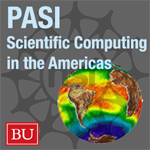News
PASI hosts become CUDA Teaching Center
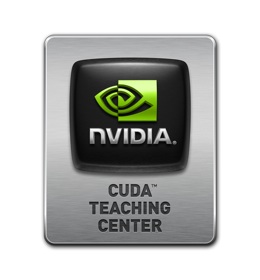 Universidad Técnica Federico Santa María has officially been named a CUDA Teaching Center by NVIDIA, the world leader in visual and high-performance computing. The institution is the first in Chile to obtain this honor, and it is among the first CUDA Teaching Centers in Latin America.
Universidad Técnica Federico Santa María has officially been named a CUDA Teaching Center by NVIDIA, the world leader in visual and high-performance computing. The institution is the first in Chile to obtain this honor, and it is among the first CUDA Teaching Centers in Latin America.
CUDA is NVIDIA’s parallel computing architecture that enables dramatic increases in computing performance by harnessing the power of the graphics processing unit (GPU). CUDA Teaching Centers are recognized institutions that have integrated GPU computing techniques into their mainstream computer programming curriculum.
This distinction is an important milestone in the research and teaching activities on GPU computing at UTFSM, and it has been received at a very exciting time for the institution.
As part of the CUDA Teaching Center program, NVIDIA will provide the Informatics Department with donated GPUs to help upgrade a teaching laboratory. With this infrastructure, UTFSM will strengthen its position as the Chilean leading center in GPU computing.
On the teaching track, the Informatics Department has committed to including GPU programming in CUDA as a permanent part of its curriculum. UTFSM has already hosted other GPU-related training events, the most important having been the PASI school on massive parallelism held last summer. For this school, more than 80 students from all around the world attended a series of lectures given by world-class researchers on High-Performance Computing. In August 2011, CTI-HPC also hosted an intensive 4-week course on CUDA, attended by 30 participants from the university community who were enthusiastic about incorporating CUDA to their own work.
SC11 workshop, travel funding for PASI fellows
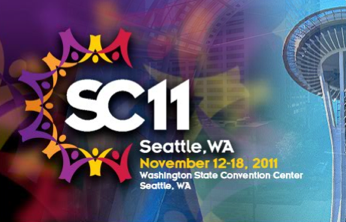 We are very pleased to announce that— thanks to new funding secured by the PI, Prof. Lorena Barba— 16 PASI fellows will have travel support to attend the top event of the HPC world: the Supercomputing Conference 2011, being held in Seattle, WA.
We are very pleased to announce that— thanks to new funding secured by the PI, Prof. Lorena Barba— 16 PASI fellows will have travel support to attend the top event of the HPC world: the Supercomputing Conference 2011, being held in Seattle, WA.
This funding is made available via NSF award OISE 1143988, to hold a workshop as a follow-up to tha Pan-American Advanced Studies Institute (PASI) held in Valparaiso, Chile in January 2011. The primary goal of this workshop is to reinforce the network created during the PASI, reconnecting young scientists with senior researchers (PASI lecturers) and their peers, and, ultimately, to stimulate new collaborations.
In addition, being co-located with the top event in the field of high-performance computing, this PASI follow-up will be invaluable for these participants to enhance their careers and feed their enthusiasm for continuing their work in this field.
Special social occasion
Prof Ridgway Scott, one of the PASI lecturers, will open the doors of his house in Seattle to receive the PASI fellows and attending lecturers for a lovely party of nice food and conversation. The party will be held on Friday, Nov. 18, 6pm. We are grateful to Prof Scott for his hospitality. We also thank the students who formed a committee to help with the logistics of this party: Anshu Arya, Ben Payne, Andrew Reiter, and Jeff Stuart.
The students who receive travel funding through this initiative are:
| Name, position, degree | Supervisor and institution | Background |
|---|---|---|
| Arya, Anshu PhD student (2009–) BE ChemE BS Comp Sc UDelaware |
Laxmikant Kale
Dept. Computer Science |
Improving the massively parallel quantum chemistry package, OpenAtom, to operate efficiently on petaFLOP machines, in collaboration with IBM Watson. Research goals: improving the efficiency and utilization of heterogeneous (accelerated) clusters, e.g., using an an adaptive run-time system capable of load- balancing during program execution, although currently has limited first-hand experience with GPUs. |
| Cooper, Christopher PhD student (2010–) BSc / PEng Mech. Engrg. UTFSM (Chile) |
Lorena Barba
Mechanical Engineering, Boston University |
Working on GPU computing for fluid dynamics, meshless vortex methods, and boundary element methods. He was a research visitor to University of Bristol, UK in 2008 with EC funding, and is a recipient of "Becas Chile" of CONICYT. Has CUDA expertise for applications in partial differential equations and sparse linear algebra using Cusp. Recently was the instructor for a one-month long intensive course on CUDA held at Universidad Técnica Federico Santa María, organized by the PI, Prof. Barba. |
| Gokey, Trevor MSc student (2008–) B.A. Psychology |
Anton Guliaev
Computing for Life Sciences Center, |
Trevor has a background in psychology and chemistry, combined with experience in system administration of small Linux clusters. He is currently a graduate student in computer science with a concentration in computing for the life sciences, with an advisor in the Chemistry and Biochemistry Department. He works in concert with a wet lab that makes point mutations of a very conserved digestive protein in mammals. His work involves using molecular simulation to elucidate changes due to the mutations under study. |
| Karpenko, Oleksiy PhD student (2008–) MSc Comp. Sci. 2001 (Ukraine) |
Yang Dai
Bioinformatics, University of Illinois at Chicago |
His interest is massively parallel approaches to processing epigenomic data. Worked as software engineer before starting PhD; extensive programming experience in C++ and OOP and many languages and environments. Publications in Bioinformatics, Immunogentics, Methods in Molecular Biology. |
| Krishnan, Anush PhD student (2009–) B.Tech/M.Tech. Aerospace Engineering, IIT Madras |
Lorena Barba
Mechanical Engineering |
He is currently working on implementing the immersed boundary method to simulate flows over moving bodies. The work could have potential applications for the study of insect flight and micro-air vehicles. He has experience with vortex methods and a solid background in computational fluid dynamics. His programming skills include various languages and libraries: C/C++, Python, bash, PETSc, CUDA, Boost. |
| Layton, Simon PhD student (2008–) BSc Math/CS Bristol MSc Mech. Eng. BU 2011 |
Lorena Barba
Mechanical Engr. Dept., Boston University |
His research has concentrated on the use of CUDA to accelerate various scientific problems including the Immersed Boundary Method and Fast Gauss Transform. Two conference presentations (USNCCM '08, ParCFD '11) and one journal paper (CPC '11). Extensive programming experience in Python, C/C++ and CUDA. NVIDIA intern during Summer '11 working on CUDA accelerated Algebraic Multigrid (AMG). |
| Li, Ying-Wai PhD student (2007–) BSc / MSc Physics Univ. Hong Kong |
David P. Landau,
Dept. Physics & Astronomy, University of Georgia |
Her research focuses on Monte Carlo simulations of simplified lattice protein models, with focus on interaction of proteins with attractive substrates. She has four papers in high impact-factor journals, and additional conference papers. Has attended two summer schools on GPU, has experience with CUDA, as well as Python and C++ |
| McKenzie, Amber PhD student (2008-) MSc linguistics |
Manton Matthews
Computer Science, University of South Carolina |
She is currently working on implementing MapReduce natural language processing (NLP) algorithms on a cluster of GPUs, as the result of a grant of GPUs from Nvidia. Has experience programming in CUDA and the Hadoop MapReduce framework, as well as Python and NLTK. |
| Olson, Britton PhD student (2008-_ B.S. Mech. Engrg. Brigham Young University |
Sanjiva Lele
Aero/Astro, Stanford University |
A DOE Computational Science Graduate Fellow, he is currently working on large eddy simulation of rocket nozzles. He has published in Physics of Fluids and Journal of Computational Physics and done internship twice at Lawrence Berkeley National Laboratory. Britton lived for two years in Mexico during his undergraduate career, mastering the Spanish language and providing humanitarian service. |
| Payne, Benjamin PhD student (2009–) MSc Physics MST |
Alexey Yamilov
Dept. Physics, Missouri University of Science and Technology |
Ben previously worked as system administrator (100 users) at UWi-Madison and is in the Air Force National Guard. He has XSEDE experience with more than 16,000 processors, and four journal publications. His PhD research is focused on light propagation through media with randomly-placed scatterers. |
| Perilla, Juan PhD student (2005–) BSc Physics (Colombia) |
Thomas Woolf
Dept. of Biophysics and Physical Chemistry, Johns Hopkins University |
Has developed and published new methods that tackle the problem of transition states for large biological systems reducing the computational cost compared to other alternatives. Has mainly focused on large parallel architectures (Kraken, Steele). Researcher at the Epilepsy Center, doing volumetric reconstructions from MRI and CT scans for accurately locating electrodes in patients with epilepsy that have to undergo brain surgery. |
| Reiter, Andrew MSc student (2010–) BSc Mathematics, UMass Amherst |
Bruce Turkington
Dept. of Applied Mathematics, UMass Amherst |
Previously a computer security engineer, Andrew has broad experience as a developer of open-source software, network security consultant and operating system design. After several years in the computer industry, he decided to return to university to study mathematics. His current focus is in optimization and computational mathematics, with interests in the fields of mulecular biology and fluid mechanics. |
| Sidelnik, Albert PhD student BSc in computer science |
David Padua
Computer Science, UIUC |
His main interests are developing programming models and optimization techniques for large-scale and many-core parallel systems. He is currently developing compiler optimizations and analytical models for high-level GPU programming. His focus is in language extensions and compiler techniques for the translation of programs from array languages (e.g. Chapel) to efficient CPU/GPU code. Albert has done internships at Nvidia Research, IBM Watson, and Cray. He has also worked at IBM on the bring up and development of the BlueGene/L and /P supercomputers. He has 8 published US patents on parallel computer architectures, and is a 2010-2011 and 2011-2012 Nvidia Fellowship recipient. |
| Stuart, Jeffery PhD student BB/MS Univ NV both in CS |
John Owens
Computer Science, University of California, Davis |
Internships in Nvidia and Google; multiple computing conference presentations. Focusing almost exclusively on GPUs in his PhD research. Part of the SciDAC UltraViz institute. MapReduce implementation on a GPU cluster. |
| Waggy, Scott PhD student (2009-) B.Sc Mech. Engrg. Colorado School of Mines |
S. Biringen
Aero. Engrg. Sciences, Univ. Colorado Boulder |
His current area of research is computational modelling of the atmospheric boundary layer, and he has developed a fully parallel Navier-Stokes solver for that purpose. The goal is to analyze the flow in the wake of a wind turbine to determine the effect the structure has on the surrounding environment. |
| Yang, Lun PhD student (2008-) B.Sc. Civil Engrg. Zhejiang University (China) |
Kaushik Dayal
Comput. Science and Engrg. Carnegie Mellon University |
Lun's research interests include mechanics of microstructure in solids and real-space phase field modeling of ferroelectrics-based materials. Current work involves modeling ferroelectrics with boundary element methods. |
Other PASI fellows attending SC11 with own funding who will also join our PASI get-together are:
| Name, position, degree | Supervisor and institution | Background |
|---|---|---|
| Cook, Henry PhD student (2009–) BSc Univ. Virginia |
David Patterson, Krste Asanovic
Computer Science, UC Berkeley |
His main research interests are manycore chip architectures, software-managed memory hierarchies, composable abstractions of data locality, design space search and optimization. Currently, Henry is focusing on creating “programmable” software-managed memory hierarchies, including mechanisms that allow for software control of data placement, movement, coherence and partition-able capacity. He’s also studying auto-tuning libraries and frameworks that can take a high-level description of the computation and emit software control instructions (e.g. Sequoia). Henry did an internship at Nvidia Research this summer and is a 2010 recipient of the Nvidia Fellowship. He is co-author of four CS conference papers, including the 2010 International Symposium on Computer Architecture, and the ACM/IEEE Conference on Design Automation. |
| Peters, Amanda PhD student (2008–) BA Physics/CS 2005 Duke U |
Efthimios Kaxiras
Applied Physics, Harvard University |
She has extensive programming experience, mainly MPI. Was software engineer for Blue Gene, 4 years working for IBM before starting PhD, in various roles. Multiple conference (CS) publications. Now working on large-scale simulation of cardiovascular hemodynamics. Has worked scaling CFD application to 294k procs. and is a finalist for Gordon Bell prize 2010. Starting to get involved with CUDA. |
Post-PASI training in Chile
See the News announcement (in Spanish) of the course at the host university website.
Find lecture slides online and follow the links for recorded lectures on iTunes U.
The intense two weeks of the PASI in January 2011 covered a broad range of topics, from basics of CUDA programming, parallel linear algebra and fast N-body algorithms, to a selection of computationally intensive applications.
The institute generated such great interest locally, that the HPC group at Universidad Técnica Federico Santa María (UTFSM) was motivated to organize a follow-on training event. They invited PASI organizer, Prof. Lorena Barba, to lead such an effort.
The post-PASI training is taking place from August 8 to September 3rd, and will cover the basics of the GPU architecture and CUDA programming, use of libraries such as CUSP and Thrust, and applications.
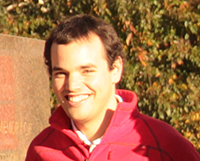
The series of 10 lectures and 8 hands-on lab sessions is being instructed by Prof. Barba's PhD student Christopher Cooper, who is a graduate of UTFSM in Mechanical Engineering. He first visited Prof. Barba at University of Bristol in 2008 as a fellow of the EU-funded project "Scientific Computing Advanced Training", and then applied to Boston University for PhD studies, which he started in January 2010. Christopher is a recipient of Becas Chile, awarded by CONICYT.
This new one-month CUDA course at UTFSM has garnered tremendous interest. The maximum capacity of 25 participants was quickly reached, and email messages continued pouring from interested students up until the first day of classes; unfortunately, there were not enough places to accommodate everyone. The limited capacity is dictated by the hands-on lab sessions, which are carried out with access to a small cluster locally with 8 GPUs, and with guest access to Boston University's 32-GPU bungee cluster.
Participants in the course come from various departments at UTFSM, from nearby Universidad de Valparaíso and Universidad Católica de Valparaíso, and even as far as Universidad de Concepción and the ALMA observatory, in Atacama.
A detailed syllabus of this intense course is available for each week of activities (including lecture slides and references). Note that the course is being instructed in Spanish, but the lecture slides are in English.
Screencasts are being uploaded shortly after each lecture, using the PASI collection of media on iTunes U.
PASI inspires TADMAC seminar series at UNAM
TADMAC stands for "Tecnologías de Alto Desempeño Aplicadas a la Modelación Matemática y Computacional", meaning: High-performance technologies applied to mathematical and computational modeling. This is a new seminar series created to cover in greater depth the topics presented at the PASI in Valparaíso, and to apply them to the research topics of interest to the participants at Mexico's national university, UNAM.
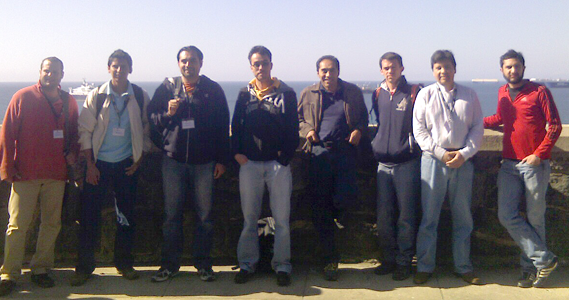
Dr Luis Miguel de la Cruz, faculty member at UNAM's Institute of Geophysics, is one of the organizers of this new seminar series, which runs weekly from March to June 2011. He explained to Prof Lorena Barba, PASI lead organizer, that before PASI the various participants from Mexico were working in isolation on topics involving parallel computing. Attending PASI created the opportunity for them to learn about the work each of them was carrying out, in addition to learning from leaders of the international scientific computing community about the cutting-edge tools being used for massively parallel computing in different areas of application.
During PASI, Luis Miguel and the other Mexican participants reflected on the need to disseminate back at UNAM the various topics covered during the institute. Thus, they set out to, each of them, in collaboration with other researchers at UNAM, study in more depth one of these topics and prepare for its dissemination via a seminar at TADMAC. In this first stage of the seminar series, each speaker is introducing the topic and developing simple examples. In a second stage starting August 2011, they will aim to show how the tools and techniques are being used in their own research projects.
They have started a TADMAC Google group, which currently counts 79 members from several educational institutions in Mexico. They also were inspired from PASI to share online all the educational materials developed for the seminars, including videos of seminars. All of the PASI participants from Mexico are currently attending the TADMAC seminars, which draw between 30 and 50 people each week.
Other participants of PASI contributing to the TADMAC seminars include:
- Emilio Zavala Sosa, MSc student in Earth Sciences—he is working on a problem involving Enhanced Oil Recovery (EOR) applying Newton's method for linearization of the equations. After PASI, he decided to make use of Python tools, and also FEniCS to solve his problems in parallel with PETSc.
- Daniel Monsivais Velázquez, MSc student in Computer Science and Engineering—he is carrying out a comparative study with CUDA, OpenMP and PETSc for the solution of two-phase flow problems. He currently is refining his measurements using new knowledge acquired at PASI.
- Saúl Piedra González, MSc student in Engineering (Temixco, Morelos)—he is working with the front-tracking method for simulation of bubbles in fluids. He is now using CUSP and Thrust to solve his equations on GPU hardware.
- Michel Rivero Corona, PhD student in Engineering (Temixco, Morelos)—he works in magnetohydrodynamics, and aims to carry out numerical simulations to compare with experimental results. He is also using CUSP and Thrust in his simulation codes.
- Antonio Muñoz Flores, MSc student in Computer Science and Engineering (Cuaititlán)—he is working with the lattice Boltzmann method (LBM) in fluid dynamics simulation. He is currently using OpenCL to parallelize his codes.
- Ursula Iturrarán Viveros, associate professor at the Faculty of Science (Mexico City)—she is working in computational fluid dynamics and earthquake simulation, and currently is developing some of her methods with CUSP and Thrust.
Luis Miguel himself is directing a group of experts to develop simulation for oil reservoirs. They are developing (i) a finite volume method, (ii) a streamline-based simulator, and (iii) a finite element method code using FEniCS. In all cases, they are using PETSc and CUDA for the solution of the systems of equations. Luis Miguel is also working on problems of fluid mixing, for which he develops software using generic programming techniques, and is creating CUDA kernels based on CUSP and Thrust.
- Poster of the TADMAC seminar series, listing the topics of the first phase, March-June 2011.
New collaboration forged at PASI
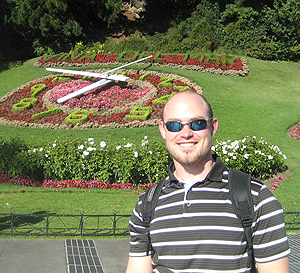
David Ketcheson and Jefferey Stuart—both PASI 2011 participants who met while in Chile—have formed a team of Applied Mathematicians and Computer Scientists from KAUST, UC Davis, University of Washington, and the American University of Beirut, to work on the explicit solution of hyperbolic partial differential equations on GPUs.
Specifically, the team has started work on porting compute-intensive Riemann solvers to CUDA for use in the package PyCLAW and for standalone use. They are preparing to submit their work as a paper to InPar 2011 and as a poster to SC 2011.
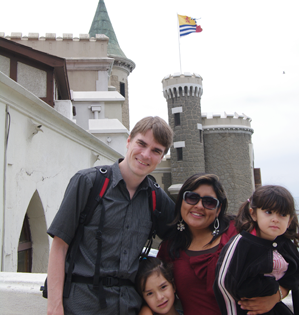
Jefferey Stuart is a PhD student at University of California, Davis, under the supervision of Prof. John Owens. He has focused almost exclusively on using GPUs in his graduate work, notably creating a MapReduce implementation on a cluster of GPUs. Jeff explicitly wanted to attend the PASI in Chile to network with other researchers with the purpose of starting new collaborations. It is already paying off for him to have participated!
David Ketcheson is an Assistant Professor of Applied Mathematics at King Abdullah University of Science and Technology since July 2009. Previously, he was a graduate student at the University of Washington, and a US Department of Energy Computational Science Graduate Fellow. His doctoral supervisor was renowned Professor Randall J. LeVeque.
The new collaboration between David and Jeff was instigated by Aron Ahmadia, a computational scientist from the KAUST Supercomputing Lab, who met Jeff at the PASI and invited him to KAUST with the idea of getting Jeff and David to work together. This initiative was strengthened by the in-person meeting at KAUST, during a workshop that David says was in great part organized during PASI—being in Valparaiso together with Matthew Knepley (PASI lecturer) and Aron Ahmadia (participant) allowed them to plan the event.
This is the type of ripple effect that a successful scientific gathering aims to have. We are grateful to David, Jeff, Matt and Aron for coming to Chile for this PASI and helping make it a success.
PASI materials now online
Screencasts
We are proud to present full-length screencasts of the lectures held during the PASI in Valparaíso. These consist of video of the speaker's computer screen (slides, animations, etc.), with the audio of the lecture room. Most of these videos captured the sound with the built-in microphone of the presenter's laptop.
Thanks to Anush Krishnan (Prof. Barba's PhD student) for his hard work for the production of these screencasts.
- At this time, all the screencasts are available via a course on iTunes U.
- We are also adding the videos to BU's YouTube channel (for non-iTunes users).
Discussion Group
A Google group was created for informal exchanges among students and other participants to the PASI in Chile. We hope that this can continue to be active after the event, if only for occasional announcements of interest to the group that met in Valparaiso for the two intense PASI weeks.
Hosts announce local student support
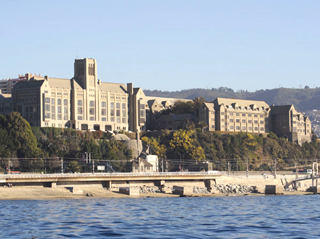
The host institution, Universidad Técnica Federico Santa María (UTSFM), has announced local student support, to help fray accommodation costs in a local bed & breakfast, and lunches during the institute. This will help students from other cities in Chile to be able to participate in this unique educational event.
The Center for Technological Innovation in High-Performance Computing, CTI-HPC, based at UTFSM, is receiving online registrations, with requests for support.
There are only 10 supported spaces, so act soon!
The support will consist of $48.000 CLP (chilean pesos) for lodging (12 nights at a local B&B or pensión), and $24.000 CLP for lunches.
For additional information, please contact the local organizers on contact@hpc.cl
Additional funding for this PASI
The Scientific and Technological Center of Valparaíso, CCTVal, has awarded supplementary funding of almost US$10,000 to offer hosting (labs, AV equipment and staff, coffee breaks, speaker recognition dinner) and local student support.
Travel grants for LA students announced
At this time, we are able to announce the applicants from Latin America that we are able to fund to attend this PASI, thanks to NSF award OISE-1036435. We would like to extend to all the interested students who cannot be offered support at this time our sincerest expression of regret. Hopefully, some of you may be able to find support from another source to attend. If this were the case, we will be able to offer a waiver of the registration fees for these students/postdocs.
The selected applicants for a travel grant are listed below. The travel grant consists of US$1000 towards air fare from Mexico and US$300 towards air fare from Argentina, plus a per-diem allowance of $120 capped at $1200. Please note that these travel grants are capped, which means that if your travel cost were to be higher than the grant amount, you are expected to obtain supplementary funding from your supervisor or another source.
| Name and position | Supervisor and institution | Background |
|---|---|---|
| Bursztyn, Gabriel PhD student Comp Sc (2009) |
Alejandro Otero
Universidad de Buenos Aires |
He has experience with a variety of programming languages including C++, parallel programming with OpenMP and knowledge of Ccomputational Fluid Dynamics, currently using finite element and spectral methods. He has taken courses on OpenMP and MPI and will extend his research codes to a parallel version during the PhD. |
| Cosimo, Alejandro PhD student Informatics Eng (2009) |
Alberto Cardona
International Center for Computational Methods in Engineering (CIMEC), Universidad Nacional del Litoral, AR |
He is well-versed in various programming languages including Python, and is now working on modeling the mechanical behavior of welded unions in nuclear power plants. He did a 3-month culturale exchange program in South Africa. |
| García-Cano, Edgar MSc student Comp Eng (2005) |
Katya Rodríguez
Research Institute in Applied Mathematics and Systems (IIMAS), UNAM |
He is well-versed in a variety of programming languages and also has experience as Unix system administrator. Previously, he worked in several computing projects involving finacial processes and web systems. His MSc research involves evolutionary computing, in which large amounts of data is searched, which could be amenable to acceleration on GPUs. |
| Garelli Luciano PhD student Aero & Mech Eng (2005) |
Mario A. Storti
International Center for Computational Methods in Engineering (CIMEC), Universidad Nacional del Litoral, AR |
Worked for a year at Lockheed Martin Argentina, before starting his PhD in Engineering Sciences, specializing in computational mechanics. His research is focused on fluid-structure interactions in supersonic and hypersonic conditions. He has taken several courses on numerical methods, algorithms and data structures in C++ and HPC, and has two published journal papers on Comp. Fluids and several conference presentations. |
| Kler, Pablo A. PhD student Bio Eng (2006) |
Fabio A. Guarnieri
International Center for Computational Methods in Engineering (CIMEC), Universidad Nacional del Litoral, AR |
His research is centered on developing techniques for design of Lab-on-a-Chip devices, by multi-physics modeling (fluid and mass transport, electric fields and chemical reactions). He uses the finite element method, FEM, with parallel applications using MPI and PETSc, and wishes to improve his skills, including MPI, OpenMP and GPU computing. |
| Miranda, Natalia Carolina PhD student Comp Sc (2005) |
Edgar Leonel Chavez
Universidad Nacional de San Luis |
Her current PhD topic is “Getting robust signature for multimedia objects in real-time using a parallel GPU-CPU architecture”. It involves developing tools with the ability to pair audio signals of the same perceptual nature, by extracting audio fingerprints. Has taken several courses in parallel computing, digital media, graphics, machine learning and others. |
| Monsivais Velazquez, Daniel MSc student Physics (2006) |
Luis Miguel De la Cruz Salas
UNAM |
He is following two Master’s programs, one in non-linear dynamics and complex systems and one in computer science, for which he is writing the thesis. It is focused on evaluating various architectures and methods for porous media. He knows a variety of programming languages, including C/C++, fortrana and Python, and also dMPI, OpenMP, and some self-taught CUDA |
| Muñoz Flores, Antonio MSc student Chem Eng (1993) |
Suemi Rodriguez Romo
Research Institute in Applied Mathematics and Systems (IIMAS), UNAM |
He worked as process engineer, technical advisor, and manager consultatnt at various stages before starting graduate study. He is currently a student working on lattice Boltzmann method for multiphase flows, with GPUs as part of his MSc thesis project. His application of interest is the behavior of gas-liquid mixtures flowing through membrane micropores, with focus on app;lications in hydrogen cells. |
| Piedra, Saul MSc student ElecMech Eng (2009) |
Eduardo Ramos
Center for Energy Research, UNAM |
He is working on computational fluid dynamics with immersed boundary methods and is a C/C++ programmer. His research is focused on bubbly flows, using front-tracking methods and he is extending an existing 2D code to 3D, realizing in this case the computational time will be too long; this has brought him to consider GPUs to accelerate the codes. |
| Ribero Vairo, Melisa PhD student Civil Eng (2005) |
Anibal Mirasso
Universidad Nacional de Cuyo, Mendoza, AR |
At the Institute of Structural Mechanics and Seismic Risk, she is currently working on FEA and wishes to extend the codes to parallel systems. She is also interested in biomechanics, especially mechanical properties of living tissue. She is mostly a Matlab programmer, but has some knowledge of Fortran and C. Her lab is planning to add GPUs to an existing cluster. |
| Rivero Corona, Michel Alejandro PhD student MSc Mech Eng 2008 |
Sergio Cuevas Garcia
UNAM |
Is working on magnetohydrodynamics, MHD, including experimental work, and electromagnetic processing of materials. Has several conference presentations, mainly in Mexico, but two abroad: APS 2010 and IUTAM Enmark 2008. In his MSc thesis, he developed an MHD pump, and is now studying mixing and stirring of liquid metal. |
| Ruestes, Carlos PhD student Aero Eng (2005) |
Eduardo Bringa
Universidad Nacional de Cuyo, Mendoza, AR |
His interests include molecular dynamics, multi-scale simulation; currently uses LAMMPS including the GPU version and thus wishes to learn coding for the GPU. |
| Tago Pacheco, Josue PhD student MSc Comp Sc (2007) |
Victor Cruz Atienza
Institute of Geophysics, UNAM |
As PhD research, he is working on earthquake modeling, wave attenuation and dynamic rupture, using discontinuous Galerkin methods. He programs in C++, Java and fortran and knows MPI and OpenMP. He has developed code solving 3D elastodynamics with DGM, and in 2D with spectral methods. He is familiar with domain decomposition and finite element methods, and has presented his work at conferences both in Mexico and abroad. |
| Zavala, Emilio MSc student Geoph. Eng. (2007) |
Ismael Herrera
UNAM |
Ample programming experience, including C++, fortran and Matlab, OpenMP and MPI. He worked for 3 years in airborne geophysics operations, processing magnetrometry, electromagenetic data. He is currently working on multiphase flow in porous media for enhanced oil recovery, but also has a deep interest in sustainable energy sources. |
Travel grants for US students announced
We received 68 eligible applications for travel grants from students and postdocs from the US and Canada. This made the exercise of selecting the awardees for these travel grants epecially difficult, and unfortunately means that many highly qualified applicants will not receive a grant. We would like to extend to all the interested students who cannot be offered support at this time our sincerest expression of regret. Hopefully, some of you may be able to find support from another source to attend. If this were the case, we will be able to offer a waiver of the registration fees for these students/postdocs.
The selected applicants for a travel grant are listed below. The travel grant consists of US$1000 towards air fare, and a per-diem allowance of $120 capped at $1200 (in other words, the value of the grant is $2200).
| Name and position | Supervisor and institution | Background |
|---|---|---|
| Arya, Anshu PhD student(2009–) BE ChemE BS Comp Sc UDelaware |
Laxmikant Kale
Dept. Computer Science |
Improving the massively parallel quantum chemistry package, OpenAtom, to operate efficiently on petaFLOP machines, in collaboration with IBM Watson. Research goals: improving the efficiency and utilization of heterogeneous (accelerated) clusters, e.g., using an an adaptive run-time system capable of load- balancing during program execution, although currently has limited first-hand experience with GPUs. |
| Bhagatwala, Ankit PhD student (2005–) BSc / MSc Ocean Engrg. IIT Madras |
Sanjiva, Lele
Dept. Aeronautics & Astronautics, Stanford University |
Working on shock-turbulence and shock-interface interactions in spherical geometry for inertial confinement fusion. Did internship at Max-Planck on helioseismology. Author of a 3D massively parallel Navier-Stokes solver scaling up to 32k cores on the Blue Gene/P supercomputer at the Argonne National Laboratories. Attended GPU course at Stanford Spring 2010. |
| Corona, Eduardo PhD student 3rd yr BSc Applied Math Mexico 2007 |
Denis Zorin
Courant Institute of Mathematical Sciences, NYU |
In his undergraduate, worked with Finite Element Methods. Has been working on kernel-independent FMM since summer 2008, now developing fast direct solver for boundary-integral equations on surfaces (application is vesicles in Stokes flow). Currently attending HPC course by Berger and Klockner; knows C/C++ but no parallel experience on CV. Research very much in line with topics of PASI courses. |
| Espinosa, Allan PhD student (2008–) BSc ECEng (Philippines) |
Ian Foster
Dept. Computer Science |
Has designed scientific workflows to support bioinformatics, earthquake/geoinformatics and molecular dynamics simulations as loosely-coupled and tightly-coupled applications in petascale systems (Argonne IBM BlueGene/P and TACC Ranger SUN Constellation). Current work consists in running several 30,000 CPU-hour earthquake simulations on distributed resources like the Open Science Grid. |
| Fierst, Janna Postdoctoral researcher PhD 2010 FSU |
Patrick Phillips
Center for Ecology and Evolutionary Biology, University of Oregon |
NSF-funded postoctoral fellow in biology, working on bioinformatics and evolutionary genetics. Using computational modeling and data on genetic interactions in yeast to integrate current evolutionary theory with a modern, mechanistic understanding of biological networks. Four publications: Evolution, Phycologia. Would like to attend PASI to learn about modern approaches to large-scale computing and how these can be implemented in biological research. Learned to program in a "Programming for Biologists" class, C/C++, Java, Python,and Unix shell but no parallel experience. |
| Ho, Kenneth PhD student (2007–) BSc 2007 Applied Comp. Math. Caltech |
Leslie Greengard
Courant Institute of Mathematical Sciences |
As an undergraduate, did research on synthetic DNA switches. Caltech Bioengineering Bootcamp 2008. Two journal publications: PLoS Comp. Biol. and Theor. Biol. Med. Model. Now working on fast direct methods for molecular electrostatics, using boundary integral formulation and wishes to learn about parallelization of these methods. Additional interests in systems biology and neuroscience. |
| Karpenko, Oleksiy PhD student (2008–) MSc Comp. Sci. 2001 (Ukraine) |
Yang Dai
Bioinformatics, University of Illinois at Chicago |
His interest is massively parallel approaches to processing epigenomic data. Worked as software engineer before starting PhD; extensive programming experience in C++ and OOP and many languages and environments. Publications in Bioinformatics, Immunogentics, Methods in Molecular Biology. |
| Layton, Simon PhD student (2008–) BSc Math/CS Bristol |
Lorena Barba
Mechanical Engr. Dept., Boston University |
Ample programming experience in Python, C/C++ and other languages. Has experience with CUDA and is working on the shallow water equation model for storm surges with high-order (WENO) methods; has knowledge of vortex methods and FMM. |
| Li, Ying-Wai PhD student (2007–) BSc / MSc Physics Univ. Hong Kong |
David P. Landau,
Dept. Physics & Astronomy, University of Georgia |
Research focuses on Monte Carlo simulations of simplified lattice protein models, with focus on interaction of proteins with attractive substrates. Three journal papers: Phys Rev E, Comp Phys Comp. Has attended two summer schools on GPU, so some experience with CUDA. Python programmer, also C++ |
| McKenzie, Amber PhD student MSc linguistics |
Manton Matthews
Computer Science, University of South Carolina |
Her research is in parallel natural language processing (NLP), including efforts to improve performance by shortcuts in data processing; identifying areas for parallelization within different NLP applications. Some limited experience with CUDA |
| Payne, Benjamin PhD student (2009–) MSc Physics MST |
Alexey Yamilov
Dept. Physics, Missouri University of Science and Technology |
Worked as system administrator (100 users) at UWi-Madison. Air Force National Guard. Teragrid experience up to 1000 procs. Four journal publications: Phys. Rev. B, Physica B, J. Mod. Opt. PhD research focused on light propagation through media with randomly-placed scatterers. Has parallel prog. experience with MPI |
| Perilla, Juan PhD student (2005–) BSc Physics (Colombia) |
Thomas Woolf
Dept. of Biophysics and Physical Chemistry, Johns Hopkins University |
Has developed and published new methods that tackle the problem of transition states for large biological systems reducing the computational cost compared to other alternatives. Has mainly focused on large parallel architectures (Kraken, Steele). Researcher at the Epilepsy Center, doing volumetric reconstructions from MRI and CT scans for accurately locating electrodes in patients with epilepsy that have to undergo brain surgery. |
| Peters, Amanda PhD student (2008–) BA Physics/CS 2005 Duke U |
Efthimios Kaxiras
Applied Physics, Harvard University |
She has extensive programming experience, mainly MPI. Was software engineer for Blue Gene, 4 years working for IBM before starting PhD, in various roles. Multiple conference (CS) publications. Now working on large-scale simulation of cardiovascular hemodynamics. Has worked scaling CFD application to 294k procs. and is a finalist for Gordon Bell prize 2010. Starting to get involved with CUDA. |
| Stuart, Jeffery PhD student BB/MS Univ NV both in CS |
John Owens
Computer Science, University of California, Davis |
Internships in Nvidia and Google; multiple computing conference presentations. Focusing almost exclusively on GPUs in his PhD research. Part of the SciDAC UltraViz institute. MapReduce implementation on a GPU cluster. |
Nvidia co-sponsors two students for PASI
 Two graduate students who have recently been awarded an Nvidia fellowship will be co-sponsored by the company to attend PASI. They are Henry Cook, from University of California Berkeley, and Albert Sidelnik, from University of Illinois at Urbana-Champaign.
Two graduate students who have recently been awarded an Nvidia fellowship will be co-sponsored by the company to attend PASI. They are Henry Cook, from University of California Berkeley, and Albert Sidelnik, from University of Illinois at Urbana-Champaign.
Each of them will receive a 50% travel grant from Professor Barba's NSF award, and an additional $1000 from Nvidia towards their airfare. Both students will contribute to PASI by making a presentation about their research and the activities going on at their labs. Here is a brief introduction to the two first student participants that we can today announce:
Henry Cook
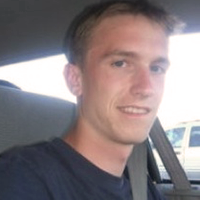 PhD student, Dept. Computer Science, University of California Berkeley (advisors: David Patterson and Krste Asanovic)
PhD student, Dept. Computer Science, University of California Berkeley (advisors: David Patterson and Krste Asanovic)
Henry has a BSc in computer science (2007) from University of Virginia, where he worked under Prof. Kevin Skadron, and an MSc from UC Berkely (2009). He lists as his main research interests: manycore chip architectures, software-managed memory hierarchies, composable abstractions of data locality, design space search and optimization.
Currently, Henry is focusing on creating "programmable" software-managed memory hierarchies, including mechanisms that allow for software control of data placement, movement, coherence and partition-able capacity. He's also studying auto-tuning libraries and frameworks that can take a high-level description of the computation and emit software control instructions (e.g. Sequuoia). Such frameworks meed knowledge of the structure of computations from domain experts, thus Henri will use his PASI experience to familiarize himself with a wider array of HPC applications.
Henry did an internship at Nvidia Research this summer and is a 2010 recipient of the Nvidia Fellowship. He is co-author of four CS conference papers, including the 2010 International Symposium on Computer Architecture, and the ACM/IEEE Conference on Design Automation.
Albert Sidelnik
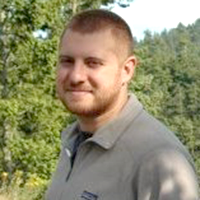 PhD student, Dept. Computer Science, University of Illinois Urbana-Champaign (advisors: David Padua and Maria Garzaran)
PhD student, Dept. Computer Science, University of Illinois Urbana-Champaign (advisors: David Padua and Maria Garzaran)
Albert has a BSc in computer science (2001) from Rutgers University, and MA in the same field from Boston University (2005). His main interests are developing programming models and optimization techniques for large-scale and many-core parallel systems. He is currently developing compiler optimizations and analytical models for high-level GPU programming. His focus is in language extensions and compiler techniques for translation of programs from array languages (e.g. Chapel) to efficient GPU code.
Albert has done internships at Cray and IBM and has a few years of experience as a software engineer, working in IBM's BlueGene. He has 5 published US patents on architecture, and is a 2010 recipient of the Nvidia Fellowship.
